 W
WAdept is a combined automatic differentiation and array software library for the C++ programming language. The automatic differentiation capability facilitates the development of applications involving mathematical optimization. Adept is notable for having applied the template metaprogramming technique of expression templates to speed-up the differentiation of mathematical statements. Along with the efficient way that it stores the differential information, this makes it significantly faster than most other C++ tools that provide similar functionality, although comparable performance has been reported for Stan and in some cases Sacado. Differentiation may be in forward mode, reverse mode, or the full Jacobian matrix may be computed.
 W
WCoCalc is a web-based cloud computing (SaaS) and course management platform for computational mathematics. Part of the Sage project, it supports editing of Sage worksheets, LaTeX documents and Jupyter notebooks. CoCalc runs an Ubuntu Linux environment that can be interacted with through a terminal, additionally giving access to most of the capabilities of Linux.
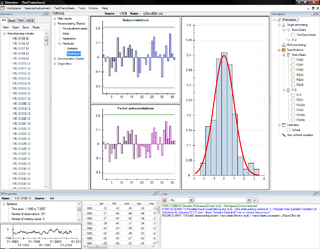 W
WJDemetra+ is a program for seasonal adjustments that was developed and published by Eurostat – European Commission. It supports TRAMO&SEATS and X-12-ARIMA methods of adjustment.
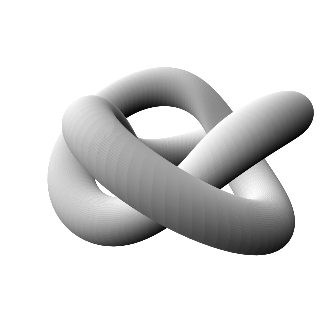 W
WEuler is a free and open-source numerical software package. It contains a matrix language, a graphical notebook style interface, and a plot window. Euler is designed for higher level math such as calculus, optimization, and statistics.
 W
WThe Fastest Fourier Transform in the West (FFTW) is a software library for computing discrete Fourier transforms (DFTs) developed by Matteo Frigo and Steven G. Johnson at the Massachusetts Institute of Technology.
 W
WFreeMat is a free open-source numerical computing environment and programming language, similar to MATLAB and GNU Octave. In addition to supporting many MATLAB functions and some IDL functionality, it features a codeless interface to external C, C++, and Fortran code, further parallel distributed algorithm development, and has plotting and 3D visualization capabilities. Community support takes place in moderated Google Groups.
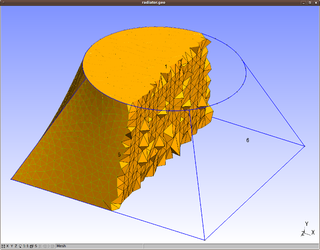 W
WGmsh is a finite-element mesh generator developed by Christophe Geuzaine and Jean-François Remacle. Released under the GNU General Public License, Gmsh is free software.
 W
WGNU Octave is software featuring a high-level programming language, primarily intended for numerical computations. Octave helps in solving linear and nonlinear problems numerically, and for performing other numerical experiments using a language that is mostly compatible with MATLAB. It may also be used as a batch-oriented language. Since it is part of the GNU Project, it is free software under the terms of the GNU General Public License.
 W
WGNU Units is a cross-platform computer program for conversion of units of quantities. It has a database of measurement units, including esoteric and historical units. This for instance allows conversion of velocities specified in furlongs per fortnight, and pressures specified in tons per acre. Output units are checked for consistency with the input, allowing verification of conversion of complex expressions.
 W
Wgnuplot is a command-line program that can generate two- and three-dimensional plots of functions, data, and data fits. The program runs on all major computers and operating systems . It is a program with a fairly long history, dating back to 1986. Despite its name, this software is not part of the GNU Project.
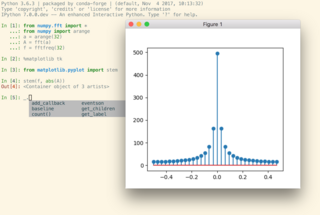 W
WIPython is a command shell for interactive computing in multiple programming languages, originally developed for the Python programming language, that offers introspection, rich media, shell syntax, tab completion, and history. IPython provides the following features:Interactive shells. A browser-based notebook interface with support for code, text, mathematical expressions, inline plots and other media. Support for interactive data visualization and use of GUI toolkits. Flexible, embeddable interpreters to load into one's own projects. Tools for parallel computing.
 W
WKaTeX is a cross-browser JavaScript library that displays mathematical notation in web browsers. It puts special emphasis on being fast and easy to use.
 W
WMathJax is a cross-browser JavaScript library that displays mathematical notation in web browsers, using MathML, LaTeX and ASCIIMathML markup. MathJax is released as open-source software under the Apache License.
 W
Wmlpack is a machine learning software library for C++, built on top of the Armadillo library. mlpack has an emphasis on scalability, speed, and ease-of-use. Its aim is to make machine learning possible for novice users by means of a simple, consistent API, while simultaneously exploiting C++ language features to provide maximum performance and maximum flexibility for expert users. Its intended target users are scientists and engineers.
 W
WmXparser is an open-source mathematical expressions parser/evaluator providing abilities to calculate various expressions at a run time. Expressions definitions are given as plain text, then verified in terms of grammar / syntax, finally calculated. Library source code is maintained separately for Java and C#, providing the same API for Java/JVM, Android, .NET and Mono. Software is free and is distributed under Simplified BSD License.
 W
WNetworkX is a Python library for studying graphs and networks. NetworkX is free software released under the BSD-new license.
 W
WNumPy is a library for the Python programming language, adding support for large, multi-dimensional arrays and matrices, along with a large collection of high-level mathematical functions to operate on these arrays. The ancestor of NumPy, Numeric, was originally created by Jim Hugunin with contributions from several other developers. In 2005, Travis Oliphant created NumPy by incorporating features of the competing Numarray into Numeric, with extensive modifications. NumPy is open-source software and has many contributors.
 W
WOwl Scientific Computing is a software system for scientific and engineering computing developed in the Department of Computer Science and Technology, University of Cambridge. The System Research Group (SRG) in the department recognises Owl as one of the representative systems developed in SRG in the 2010s. The source code is licensed under the MIT License and can be accessed from the Github repository.
 W
WSageMath is a computer algebra system (CAS) with features covering many aspects of mathematics, including algebra, combinatorics, graph theory, numerical analysis, number theory, calculus and statistics.
 W
WScilab is a free and open-source, cross-platform numerical computational package and a high-level, numerically oriented programming language. It can be used for signal processing, statistical analysis, image enhancement, fluid dynamics simulations, numerical optimization, and modeling, simulation of explicit and implicit dynamical systems and symbolic manipulations.
 W
WShogun is a free, open-source machine learning software library written in C++. It offers numerous algorithms and data structures for machine learning problems. It offers interfaces for Octave, Python, R, Java, Lua, Ruby and C# using SWIG.
 W
WSnapPea is free software designed to help mathematicians, in particular low-dimensional topologists, study hyperbolic 3-manifolds. The primary developer is Jeffrey Weeks, who created the first version as part of his doctoral thesis, supervised by William Thurston. It is not to be confused with the unrelated android malware with the same name.
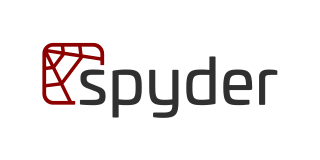 W
WSpyder is an open source cross-platform integrated development environment (IDE) for scientific programming in the Python language. Spyder integrates with a number of prominent packages in the scientific Python stack, including NumPy, SciPy, Matplotlib, pandas, IPython, SymPy and Cython, as well as other open source software. It is released under the MIT license.
 W
WSymPy is an open-source Python library for symbolic computation. It provides computer algebra capabilities either as a standalone application, as a library to other applications, or live on the web as SymPy Live or SymPy Gamma. SymPy is simple to install and to inspect because it is written entirely in Python with few dependencies. This ease of access combined with a simple and extensible code base in a well known language make SymPy a computer algebra system with a relatively low barrier to entry.
 W
WThe Template Numerical Toolkit is a software library for manipulating vectors and matrices in C++ created by the U.S. National Institute of Standards and Technology. TNT provides the fundamental linear algebra operations. TNT is analogous to the BLAS library used by LAPACK. Higher level algorithms, such as LU decomposition and singular value decomposition, are provided by JAMA, also developed at NIST, which uses TNT.
 W
WXaoS is an interactive fractal zoomer program. It allows the user to continuously zoom in or out of a fractal in real-time.
 W
WXcas is a user interface to Giac, which is a free, open source basic Computer Algebra System (CAS) for Microsoft Windows, Apple macOS and Linux/Unix; Xcas is written in C++. Giac can be used directly inside software written in C++.
 W
WYacas is a general-purpose computer algebra system. The name is an acronym for Yet Another Computer Algebra System.